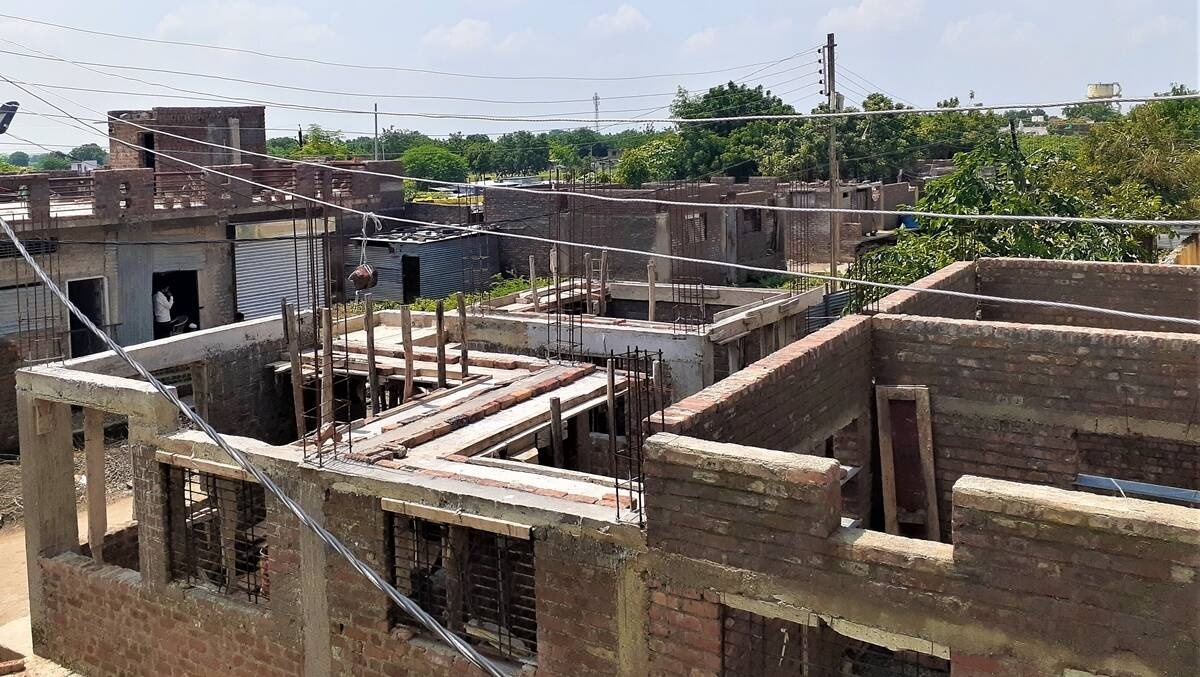 Under the scheme, announced in 2015, a beneficiary gets Rs 1.2 lakh as central assistance for the construction of a house of a minimum 25 square metres. (Representational)
Under the scheme, announced in 2015, a beneficiary gets Rs 1.2 lakh as central assistance for the construction of a house of a minimum 25 square metres. (Representational) With only 8,867 homes constructed in Pune district since its launch in 2016-17, the Pradhan Mantri Awas Yojana-Gramin scheme is lagging way behind the set target of 21,818 rural homes by 2020-2021.
Among the issues hampering the implementation of the PMAY(G), which aims at constructing homes for all homeless families in rural areas by 2022 and is one of the flagship programmes of Prime Minister Narendra Modi, are the fact that many beneficiaries do not own plots to construct houses, shortage and high cost of sand and insufficient financial assistance.
Under the scheme, announced in 2015, a beneficiary gets Rs 1.2 lakh as central assistance for the construction of a house of a minimum 25 square metres. The beneficiary also gets Rs 12,000 under the Swachh Bharat Mission (SBM) for construction of toilets and Rs 18,000 under the Mahatma Gandhi National Employment Guarantee Scheme for working on the construction. Thus, the total fund received from the government stands at Rs 1.5 lakh per unit.
Data obtained from the Pune zilla parishad shows that the progress of the scheme has been laggard since its commencement in 2016-17. In 2016-17, a total of 6,787 homes were sanctioned under PMAY(G), but only four were completed. In 2017-18, while 1,784 houses were sanctioned, a total of 3,189 were completed (including those sanctioned in the previous year). The following year, 807 new homes were sanctioned and 3,696 were completed and in 2019-20 the authorities sanctioned 5,015 homes, of which 971 have been completed. In 2020-21, while 7,425 homes have been sanctioned, only 1,007 have been completed so far.
According to officials, a major hurdle in the progress of the scheme is the fact many among the identified beneficiaries do not own a plot for the construction of houses. In Pune district, of the 21,559 rural families identified under the scheme, 3,943 do not own a plot. The state government has asked the local district administrations to make plots available either from the government-owned land bank or by helping the beneficiaries buy a plot.
“We have been able to find plots only for 975 beneficiaries so far. There are several technical issues such as the law preventing fragmentation of land and difficulties in converting agricultural land into non-agricultural,” said Sambhaji Langore, project director, District Rural Development Agency, which is supervising the implementation of PMAY(G) in Pune district.
To help the poor families who were unable to purchase plots, the Maharashtra government had launched the Pandit Deendayal Upadhyay Scheme, under which a financial assistance of Rs 50,000 is to be given to such beneficiaries. As per officials in Pune, the scheme has not been of much help in resolving the issue.
“Out of the total 975 beneficiaries to whom we have provided plots, only 46 got them through PDU scheme. The assistance of Rs 50,000 is not sufficient to buy a plot of the required size – even in villages,” said a zilla parishad official, who wished not to be named. “The rates are even higher in the villages located close to Pune and Pimpri-Chinchwad,” he added.
Meanwhile, beneficiaries – including those who got plots with the help of government and also received the first few instalments of the financial assistance under PMAY(G) – rue that the release of funds was very slow.
“It’s been over a year since my home was sanctioned under PMAY(G). I got the first instalment of the assistance (Rs 15,000) about 50 days ago. I have completed laying the foundation. Now, I am waiting for release of the next instalment. The situation is similar for many other beneficiaries in my village,” said Shaukat Mujawar, from village Takli Hazi in Shirur Tehsil.
Lately, another hurdle – although temporary – has hit the scheme. Gram Panchayat polls have been announced in the district and most officials are busy in preparations for that. “The polls will be held on January 15. We are hoping to step up the scheme only after that,” said a ZP official.